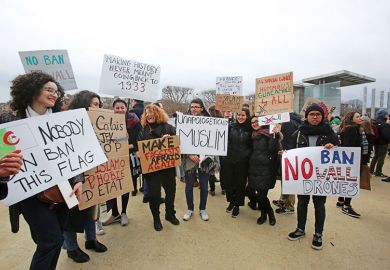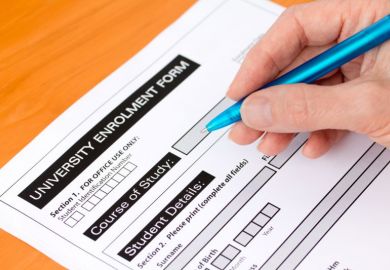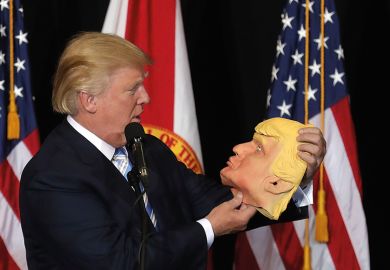Almost half of US universities have reported a decline in the proportion of international undergraduate students accepting admissions offers, according to a study from the Institute of International Education.
A survey of 112 US universities and colleges in May and June 2017 found that 48 per cent of institutions saw a decrease in their international undergraduate “yield” for the 2017-18 academic year, while 31 per cent saw an increase and 21 per cent held steady.
On average there was a two percentage point decline in international undergraduate yield, from 26 to 24 per cent since last year, according to the report Shifting tides? Understanding international student yield for fall 2017.
Yield was calculated by dividing the number of admissions deposits or official acceptances received by the number of admissions offers made by the institution.
In the survey, two-fifths of universities (40 per cent) said that they had decreased the number of admissions offers made to international undergraduates, while 51 per cent had increased offers. The large proportion of institutions decreasing the number of offers may be a result of the decline in applications from international students.
A separate survey of more than 250 US universities by six higher education groups published in March found that 38 per cent of institutions had seen a decline in their total number of international applications across undergraduate and graduate levels.
Many sector leaders had predicted a drop in international enrolment in the wake of the election of Donald Trump as US president, and the introduction of a travel ban on six mainly Muslim countries, although the two percentage point decline was smaller than most had predicted.
The new IIE report says that the two percentage point decline is comparable to shifts in the domestic US student yield, which fell from 30 to 28 per cent over the same period.
But figures published by the IIE in 2016 revealed that the overall proportion of international students in the US increased by 7.1 per cent between 2014-15 and 2015-16, although that growth had slowed from a 10 per cent rise over the previous year.
A separate survey of 176 universities from the Council of Graduate Schools, which was carried out in May and June 2017 and is detailed in the new IIE report, found that 46 per cent of respondents saw a “substantial decline” in admissions yield for international graduate students. More than half (52 per cent) of those surveyed reported declines in admission yield for students from the Middle East and North Africa.
Rajika Bhandari, deputy vice-president of research and evaluation at the IIE, said that the two percentage point decline shows that the change in undergraduate yield is “very small”.
“Most predictions to date have suggested much larger drops in admissions yield [than seen in this survey],” she said.
She added that universities have reported that they are still waiting on responses from students, so actual enrolment figures “could swing either way” by the start of the academic year.
When universities were surveyed about the concerns they had observed among admitted international students, 46 per cent said that securing and maintaining a visa was the top concern among Middle Eastern students, while making these learners feel welcome in the US was highlighted by 41 per cent of institutions.
Register to continue
Why register?
- Registration is free and only takes a moment
- Once registered, you can read 3 articles a month
- Sign up for our newsletter
Subscribe
Or subscribe for unlimited access to:
- Unlimited access to news, views, insights & reviews
- Digital editions
- Digital access to THE’s university and college rankings analysis
Already registered or a current subscriber?








